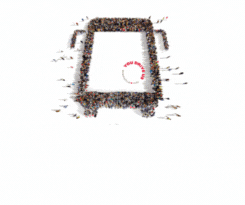
Photo: Tallinn city council
How Tallinn is using crowdsourced photos to improve transport accessibility
29 October 2024
by Christopher Carey
Tallinn is relying on a network of volunteers to map over a thousand public transport stops to improve accessibility across the Estonian capital.
The city is asking participants to use the Crowdsorsa mobile game app to map crosswalks and traffic lights in a bid to make stops safer for those with disabilities.
“Improving accessibility is one of Tallinn’s priorities and, to achieve this, it’s essential to gather accurate and current information about the condition of our transport stops,” said Tallinn Deputy Mayor Karl Sander Kase.
“Volunteer contributions are vital in helping us reach our goal of a more accessible city for all.”
How it works
The Tallinn Accessibility Information System, created in 2020, is designed to help people with special needs better plan their daily trips.
While the system currently includes information on public transport stops, the city says its data needs updating.
According to Jako Stein, Senior Specialist at Tallinn’s Welfare and Healthcare Department, volunteers interested in participating need to download the free Crowdsorsa mobile app, create a user account, and select the Tallinn public transport stop survey.
Participants can then begin photographing and uploading pictures of the stops and can earn a reward of €1 (US$1.08) per stop photographed provided it hasn’t already been photographed by someone else.
Based on the photos, the project will assess accessibility elements such as tactile features for the visually impaired or high kerbs that wheelchair users need to be aware of.
Crowdsorsa CEO Toni Paju explained that all submitted photos are reviewed to ensure they meet requirements. “The map application shows which stops have already been photographed and where unphotographed stops remain,” he noted, adding that the goal is to gather images for all 1,088 public transport stops in Tallinn.
Helsinki project
In August 2023, Helsinki used the same app to crowdsource a survey of cycle paths.
Cyclists earned money by collecting data on the condition of paths using their smartphone and a phone mount attached to their bicycle’s handlebars.

Using the Crowdsorsa app, the cycle paths were dotted with virtual berries and fruit which players collected on the map by recording video while cycling.
Their value, on average over €3 per kilometre, was then paid into the participant’s bank account with cyclists earning up to €20 per hour.
Image: Tallinn city council







